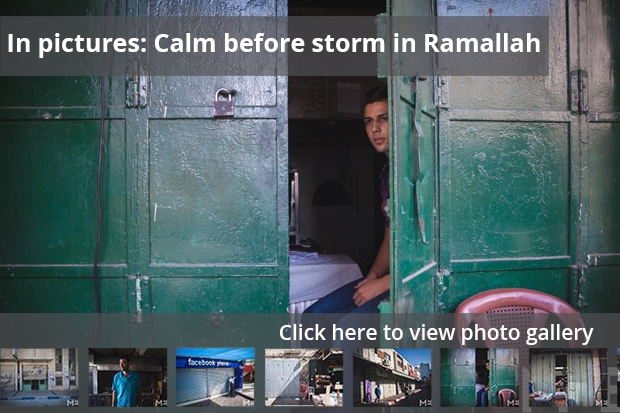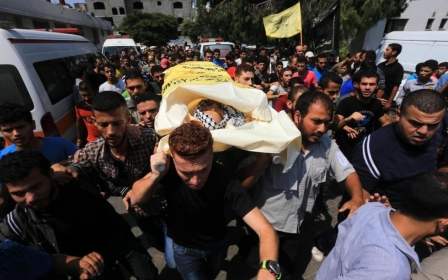In pictures: the calm before the storm in Ramallah

As night falls in Palestine and Israel on the sixteenth day of Operation Protective Edge, the situation on the ground in the occupied West Bank is once again temporarily calm although as long as Israeli bombs continue to fall on Gaza, deep-seated tensions are likely to fester.
These exploded on Monday night, when fierce protests rocked the West Bank towns of Jerusalem, Ramallah, Hebron and Nablus, among others.
Many Palestinians took to the streets in droves after Mahmoud Shawamira, a 21-year old Palestinian was shot dead by a settler in the West Bank town of Hizma on Monday evening. The killing, seemingly combined with the anger over the ongoing crackdown in the West Bank and the assualt on Gaza, is what has apparently sparked people to take to the streets.
But while many lashed out at Israel, many were also clearly angry at President Mahmoud Abbas’s handling of the situation.
Abbas’s Palestinian Authority, which rules over the West Bank, has faced fierce criticism over its handling of the protests that have broken out daily since Israel’s operation began earlier this month. In Ramallah, protestors headed for Beit El, an Israeli military facility in the city’s centre, were blocked by PA forces, who under the Oslo Accords are required to cooperate with Israel.
However, even before the protests and clashes broke out and caught the eye of the international media, the sense of resistance and anger - be it at the Israelis, at Hamas, or the PA - was visible.
Though protests erupted after night fell, tensions were on the rise throughout the day, as many Palestinians observed a general strike on Monday called in solidarity with Gaza. Shops were closed and normally busy streets empty, as everyone shut their shops and chose to lose out on a day’s wages.
(Photo credit: MEE / Andrea DiCenzo)
Hours before, the Middle East Eye spoke to Palestinians in central Ramallah, a city of 57,000 that would later explode in fierce protest.
Some called on Abbas to take affirmative action in the face of an ongoing onslaught in Gaza.
“There’s not enough assistance for Gazan people; Abu Mazen [Mahmoud Abbas] needs to be doing more – sending supplies, sending aid.”
Firas Fesiel who shut his falafel and drinks store, says that time are tough financially but that he never hesitated to shut his shop and lose out.
“It’s because people in Gaza are dead and dying. Seeing this is making people really sad," he says. "We hope this will send the message – free Palestine urgently.”
Reem Amr, a protestor holding a placard naming the Gaza Strip towns subjected to shelling, put it simply:
“We write with their blood. We’re carrying their pain in solidarity.”
Middle East Eye propose une couverture et une analyse indépendantes et incomparables du Moyen-Orient, de l’Afrique du Nord et d’autres régions du monde. Pour en savoir plus sur la reprise de ce contenu et les frais qui s’appliquent, veuillez remplir ce formulaire [en anglais]. Pour en savoir plus sur MEE, cliquez ici [en anglais].





